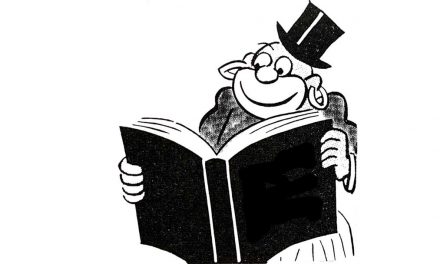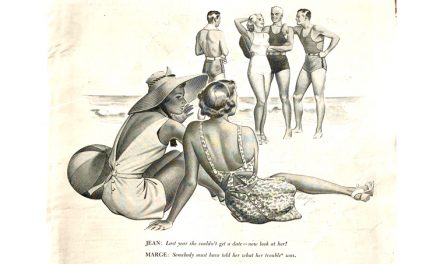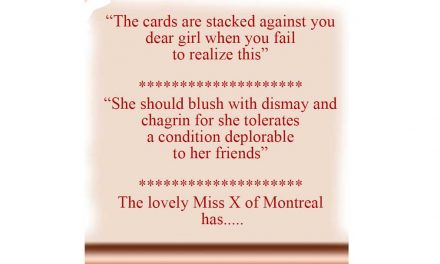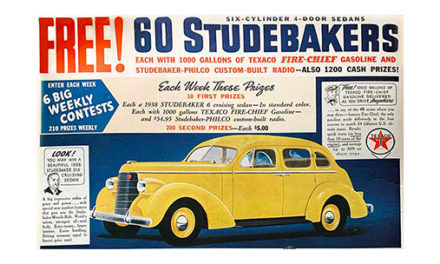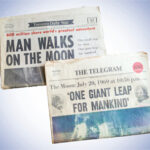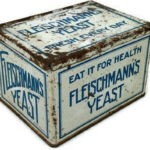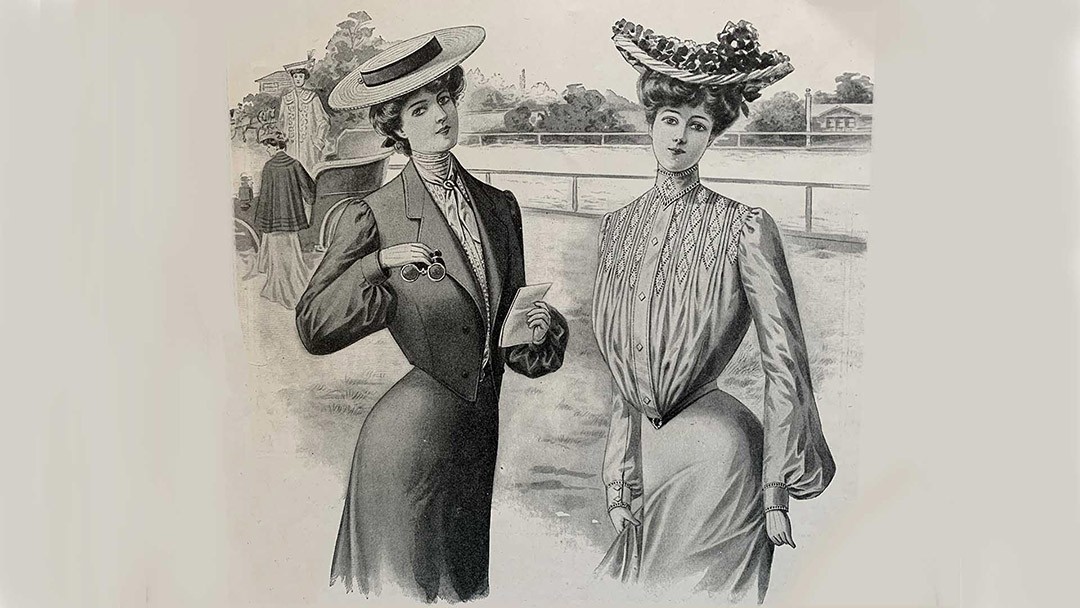
Corsets were “unmentionables”
but check these advertisements
from The Ladies Home Journal, October 1904!
No! No! This isn’t a post about corsets, it’s a post about advertising corsets. About designing and writing advertisements for a product in a highly competitive field, a product that was “unmentionable” in polite society. What ladies wore beneath their voluminous skirts was not discussed in public, in the workplace, in the drawing room. Men certainly didn’t discuss women’s corsets.
It’s 1904. Picture the creative department of an advertising agency that has just acquired a new client, a corset manufacturer. Most of the creative staff—the copywriters and artists—are male.
Where to begin! Gather the advertising of every other corset manufacturer – for inspiration, at least, and to be sure that the new client’s advertising will be somewhat original, hopefully persuasive. A glib slogan won’t do and illustrating the product will be challenging. Photographs aren’t the answer. Not for “unmentionables”. Besides, at that time, photographs didn’t reproduce well in print
The challenge is passed over to the copywriter who must acquire a wide-ranging familiarity with the corset. The facts behind the product—how is it constructed, what is the material, how durable is it, what advancements have been made in the corset world—are easy to gather from the manufacturer. Gathering facts from users will not be straightforward.
Obviously women are the purchasers and users of corsets. Are they young, middle-aged, or old? Rich or poor? Where do they live? Where do they shop? How often do they buy corsets or wear them? Are there special occasions? Is price important?
A top copywriter will do some firsthand research—talk with a representative group of women, not friends and relatives. Why do they like corsets? When do they wear them? Do they like them? Hate them? Love wearing them when…? Wish they never had to wear them? That firsthand research has to end at some time and the creating, the writing, begin.
It is time for us to examine advertisements for other corset manufacturers.
Here is a collection of 10 advertisements that appeared
in the October 1904 issue of Ladies Home Journal.
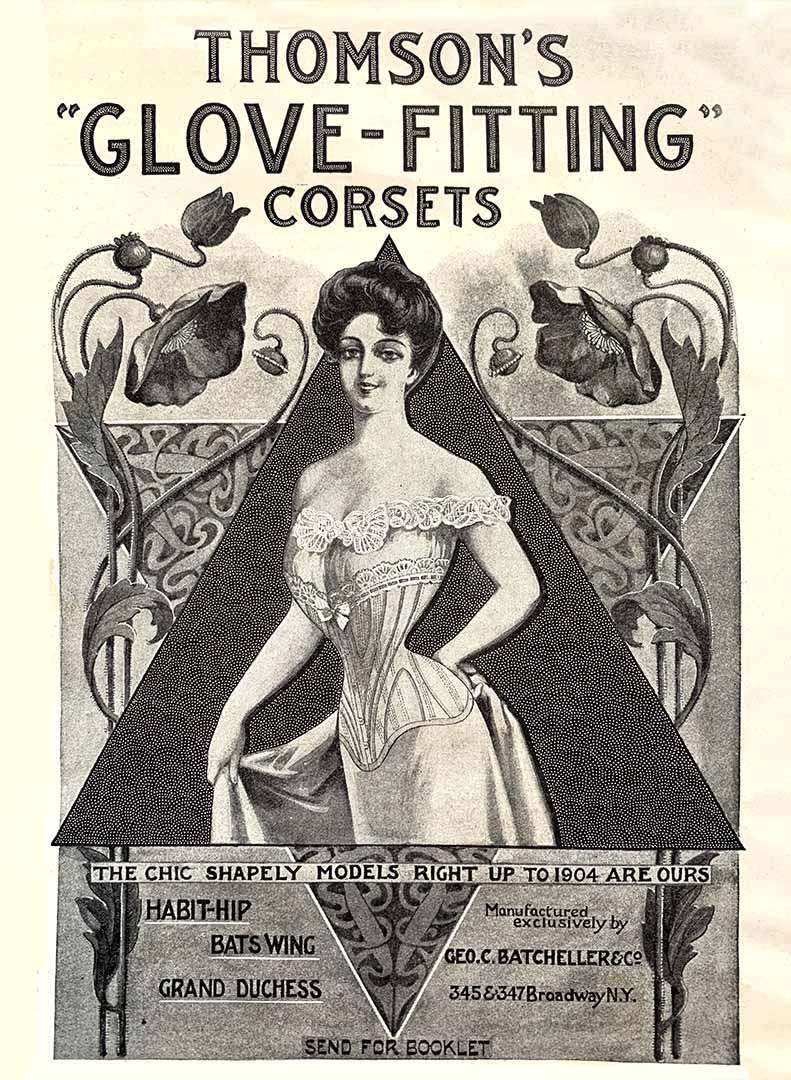
Thomson’s advertised “Glove-Fitting” corsets, chic shapely models called Habit Hip, Bats Wing and Grand Duchess. There isn’t a sentence describing the benefits of their product over others. Perhaps that could be found in the booklet from Geo C. Batcheller & Co of 345⁄347 Broadway, N.Y

The Kabot Corset Co. down the road from Thompson at 399 Broadway, N.Y. made corsets that “Outshine them all.” Kabo offered a book displaying their 165 Styles including the “Dip Hip” Models priced from $1.00 to $3.50
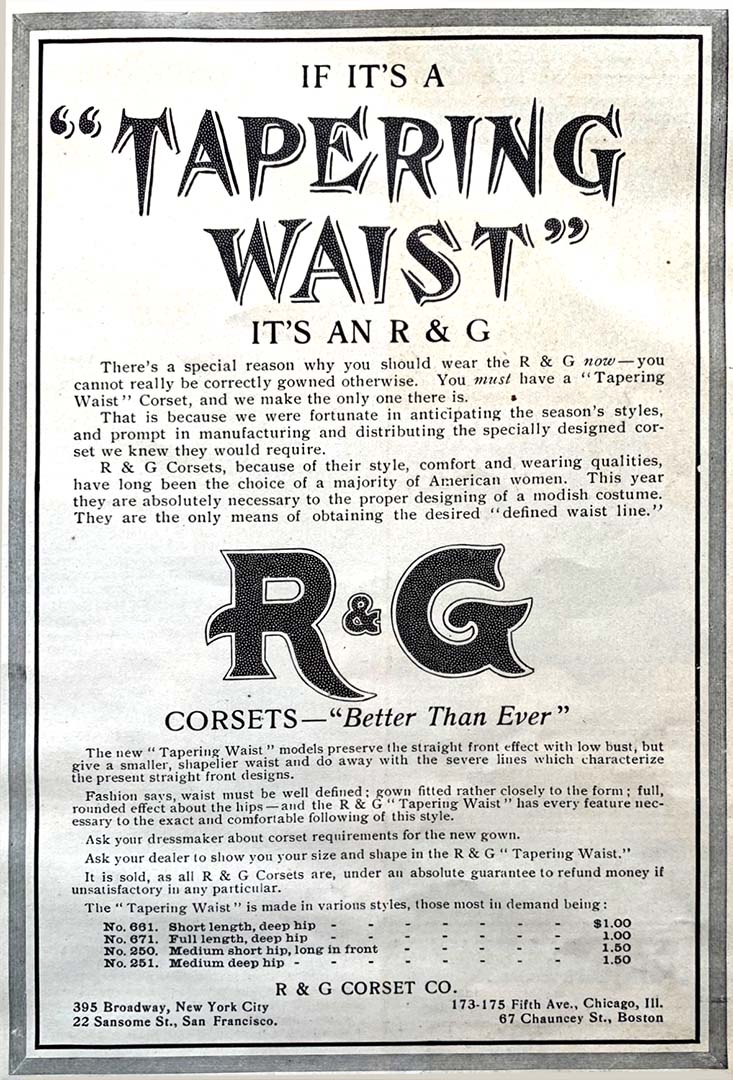
You cannot be correctly gowned , you must have a “Tapering Waist” Corset to preserve the straight effect with low bust, but give a smaller, shapelier waist and do away with severe lines.
The R & G Corset Co “were fortunate in anticipating the season’s styles, and prompt in manufacturing and distributing the specially designed corset we knew (the styles) would require.”
These corsets “have long been the choice of a majority of American women…absolutely necessary to the proper designing of a modish costume… the only means of obtaining the desired defined waist line.”
“Fashion says, waist must be well defined; close fitted rather closely to the form; full, rounded effect about the hips — and the R & G Tapering Waist has every feature necessary to the exact and comfortable following of this style.”
______________________
Two points about typography in this advertisement: the headline, “Tapering Waist” has been designed and drawn by an artist; the R & G logo was enhanced with the aid of Ben Day dots
Ben Day dots were available on transparent overlay sheets in a variety of dot sizes and distribution. To apply the dots to a drawing the artist would place the overlay material on the drawing and rub the dots onto the specific areas of the drawing. A simple technique used in many of the advertisements in our Printing Times.
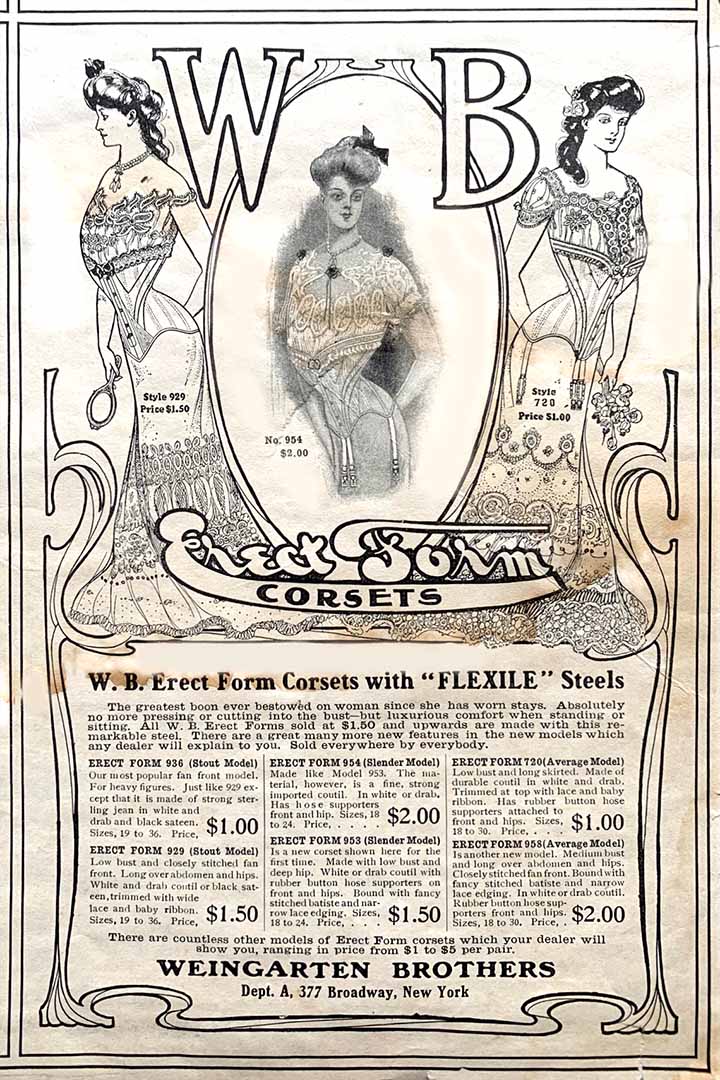
The artist was the primary creative talent in the production of this advertisement. Sadly, the artwork is not first-rate. The illustration is busy; the border is excessively ornate; the “models’ look outward and look like figureheads on ships; the Erect Form logomark is seriously malformed.
The copywriter wrote that these corsets were made with “Flexile” Steels, “The greatest boon ever bestowed on woman since she has worn stays. Absolutely no more pressing or cutting into the bust—but luxurious comfort when standing or sitting.”
This advertisement for American Beauty corsets promotes a “spiff”– rewards amounting to $1,000 given to Salesladies selling the greatest number of American Beauty corsets from Sept. 1st to Dec. 31st, 1904. The term is slang for a questionable under-the-table attempt by suppliers to influence employees. To give the offer a certain validity the Kalamazoo Corset Co says the plan also includes large rewards to merchants whose salesladies sell the most American Beauty Corset. Details of the so-called unique plan was available, on request, by merchants and employees.
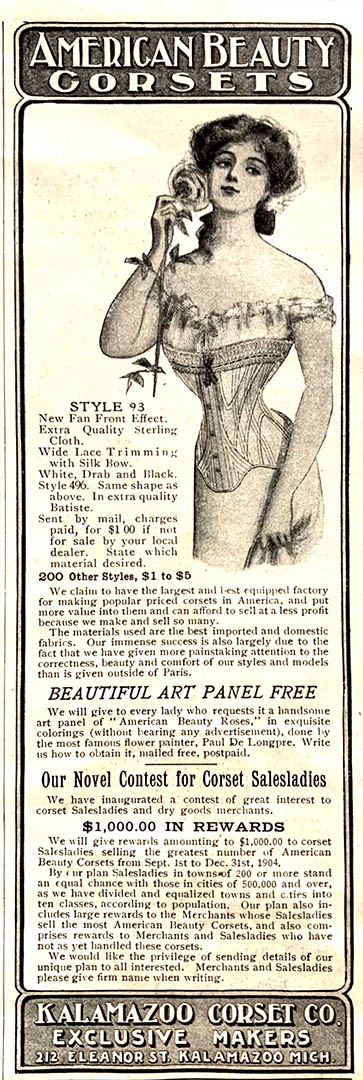
This Foster Girl advertisement features fully-dressed women. It’s the only advertisement in this group that doesn’t attempt to illustrate the corset. Artists for other advertisers have drawn corsets seemingly worn over, not under dresses and gowns.
In an age when women wore thigh-high stockings, this advertisement promotes “a safe Hose Supporter that lends symmetry and grace…assists nature in developing a shapelier form and produces a more perfect fit of corset and graceful hang of skirt.
“It reduces that prominence of the abdomen and helps give grace and erect poise to the imperfect figure. It does not draw the corset and gives a smoother effect to the skirt, no matter how worn the corset ends may be.”
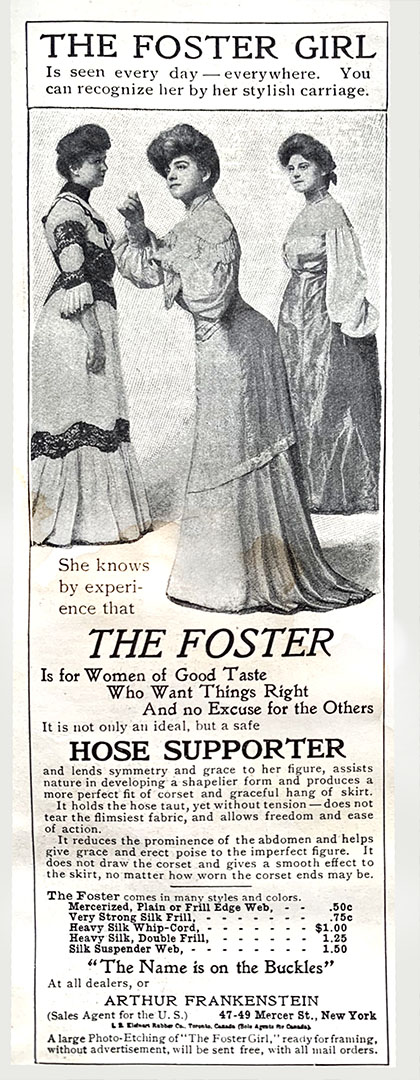
See how the creative departments of other advertising agencies handled the challenge for their clients manufacturing and selling corsets.
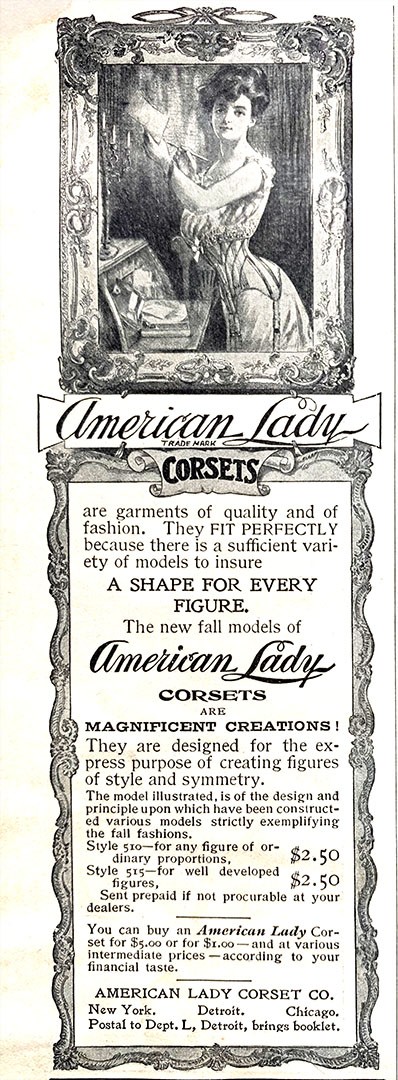

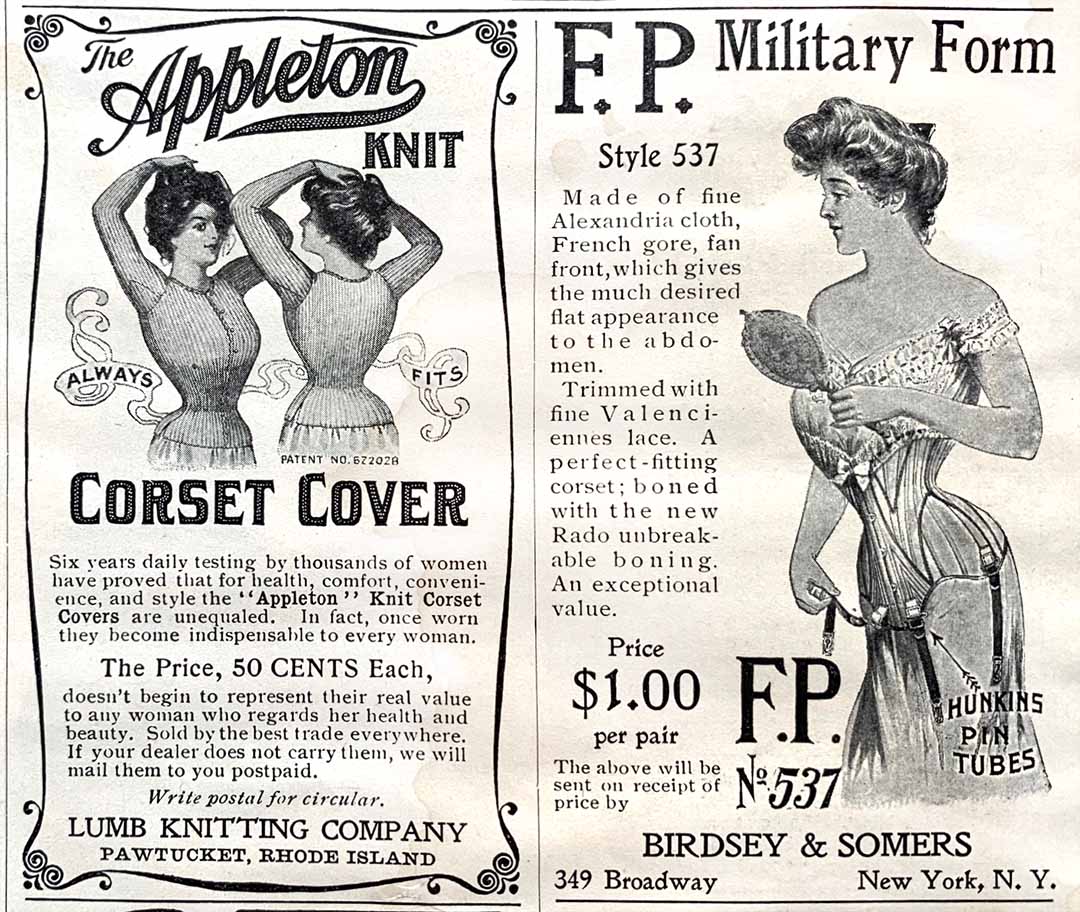
And here’s an advertisement
for men’s corsets
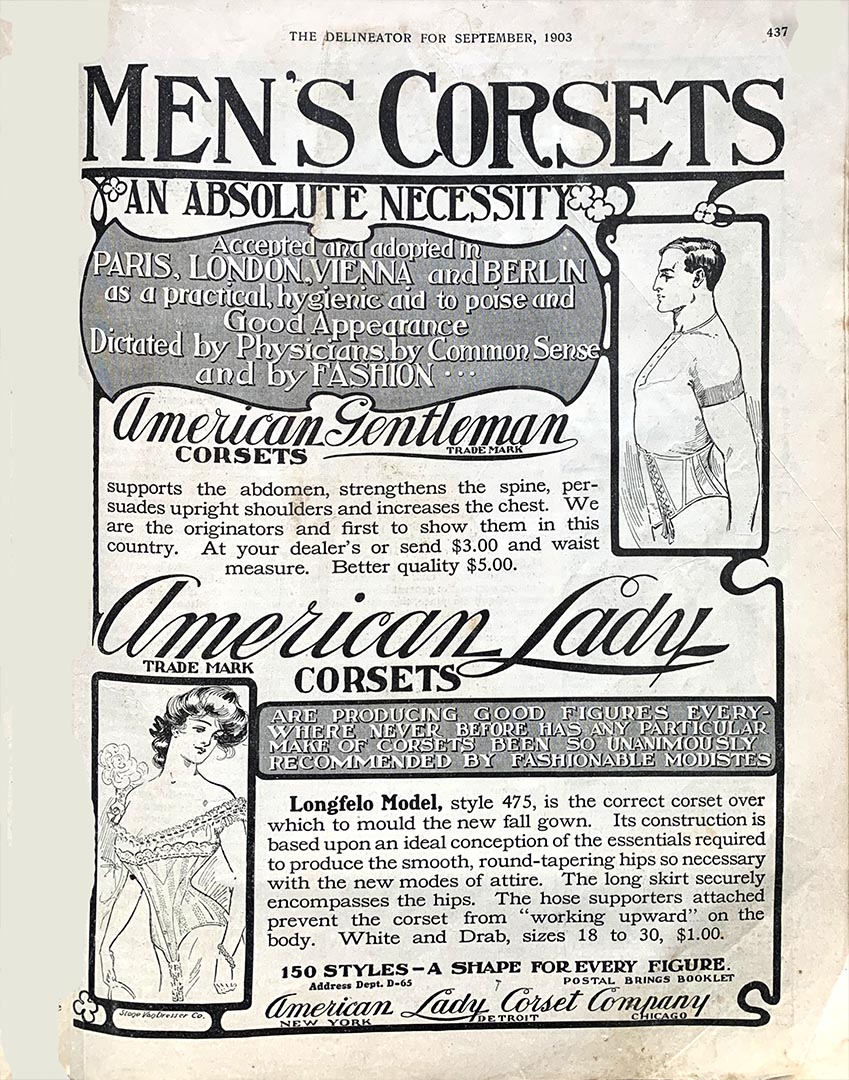
Men’s corsets — apparently an absolute necessity —were advertised in the September 1903 issue of The Delineator, an American women’s magazine of the late 19th and early 20th centuries. The monthly magazine featured Butterick sewing patterns and provided an in-depth look at the fashion of the day.
It seems that the American Gentleman corset “supports the abdomen, strengthens the spine, persuades upright shoulders and increases the chest.” Furthermore it has been “accepted and adopted in Paris, London, Vienna and Berlin.” And if that isn’t confidence building the men’s corsets are “Dictated by Physicians, Common Sense and by Fashion…”
You could buy them for $3 from local dealers or mail your money with your waist measurement. Better quality cost $5.00
The originator of this foundation garment for men, and who claimed to be the first to show them in America, was the American Lady Corset Company of New York, Detroit and Chicago.
The company offered 150 styles of corsets for ladies – a shape for every figure, they said. The Longfelo Model, style 475 above, “is the correct corset over which to mould the new fall gown. Its construction is based upon an ideal conception of the essentials required to produce the smooth, round-tapering hips so necessary with the new modes of attire. The long skirt securely encompasses the hips. The hose supporters attached prevent the corset from ‘working upward’ on the body.”
Construction! Says something about corsets, described as laced or hooked undergarments reinforced with steel or whalebone ! Ladies could buy American Lady Corsets in White or Drab, sizes 18 to 30, for one dollar. Drab? An 18 inch waist?
One last assertion: American Lady Corsets “are producing good figures everywhere. Never before has any particular make of corset been so unanimously recommended by fashionable modistes.”

Print media in 1902, and for decades after, wouldn’t accept photographs or illustrations showing women wearing only underwear. Not even swimwear in some instances. These were straitlaced times.
We recommend Nancy Millar’s book The Unmentionable History of the West described as “a fond romp through the underwear that men and women wore in days gone by. Think of corsets, navy blue bloomers, long underwear with its trap door and brassieres that could kill. Think also of the other unmentionables that came along with being sexual beings. Women had to hide their pregnancies, talk of birth control was illegal, seduction was a crime, prostitution likewise. There were so many silences, so many secrets about the private lives of men and women.”

